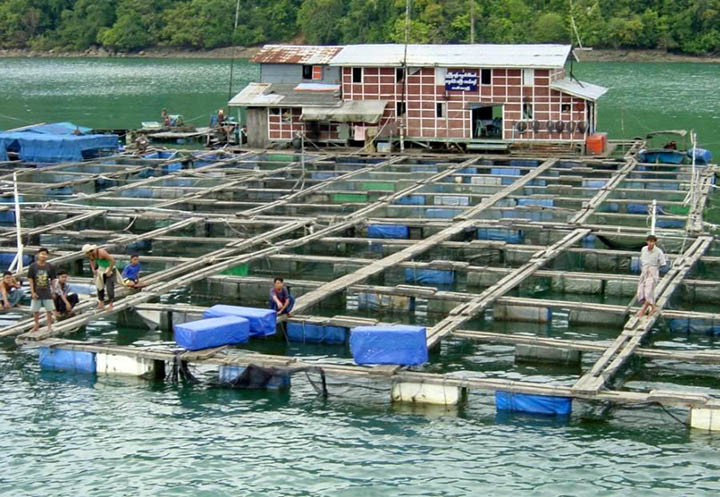30 October
Fish and shrimp production industry is the second prioritized business after agriculture sector in Myanmar. The fishery sector provides direct employment to more than 3.5 million people. Myanmar’s fishery sector has been the fourth largest contributor to the country’s GDP, and the fourth largest source of foreign earnings in the past five years.


The Department of Fisheries under the Ministry of Agriculture, Livestock and Irrigation set a record for foreign income from fisheries exports over a period of ten years.
The department is also making concerted efforts to fetchUS$1 billion in conjunction with respective organizations and entrepreneurs in the current financial year.Myanmar also had set an export earnings target of $2 billion next fiscal year, according to an official from the Myanmar Fisheries Federation (MFF).
Export earnings from the fishery sector during the period from 1 October 2018 to 30 September 2019 amounted to around $730 million. The MFF is trying to establish fish and prawn farming zones in cooperation with region and states governments while inviting foreign entrepreneurs to invest in the country’s fishery industry.
In addition the MFF is seeking ways and means to explore new export markets and adopt an advanced farming system so as to boost the country’s fish and prawn farming sector.
The export volume and revenue from exporting fishery products have increased when compared to last year, he added.Despite an increase in terms of the export volume and income, Myanmar’s fishery sector still cannot keep abreast of the neighbouring countries. Fish, prawns and crabs are required to meet set standards for better quality and size in foreign markets.
At the same time, authorities are making efforts to conserve fishery resources as well as ensure sustainable development in the country’s fishery sector.The Southeast Asian country also exports prawns, crabs, squid, shrimp, dried shrimp, and dried fish to its neighbours such as Thailand and China through its border trade gates.
Myanmar was allowed to export its farmed fish, prawn, and crabs to the UE countries since 1 December last year, he said. Earlier this year, only fish caught in the wild were allowed to be exported to the EU.
The department is closely working with the fish breeders, processors and exporters to ensure Myanmar marine products meet the rules and regulations of importing countries.Saudi Arabia has suspended temporary fishing imports from Myanmar since 31 March 2018 after bacteria was found on the same fish species imported from Vietnam.
But a negotiation between Myanmar officials and Saudi authorities over the ban on fish imports from Myanmar resulted in resuming the fish and prawn export to the Middle Eastern kingdom, he added.Myanmar mainly exported Rohu fish to Saudi Arabia but the estimated loss due to the ban on fishery products from the Southeast Asian country was over $30 million, he said.
Myanmar ships farmed fish to Saudi Arabia, accounting for 30 per cent of its fishery exports and about 40 per cent of rohu exports.Myanmar’s fishery products have been exported to over 40 countries worldwide for the last 10 years.Now Myanmar’s marine products mainly go to more than 40 countries including the European Union, Saudi Arabia, China, Japan, Thailand, Singapore and United States due to modern packaging, high quality of the goods and market expansion.There are around 248,000 acres of fish farms and 240,000 prawn farms throughout the country.Myanmar shipped 340,000 tons of marine products worth $530 million in the 2013-2014 fiscal year, transported 330,000 tons of fishery products valued at $480 million in the financial year 2014-2015, and freighted 360,000 tons of fishery products worth $500 million in the 2015-2016 FY.
The country also exported 430,000 tons of marine products worth $600 million in the fiscal year 2916-2017 and shipped 560,000 tons of fishery products valued at $700 million in the financial year 2017-2018, according to the statistics from the Ministry of Commerce.
By Kyaw Htike Soe



